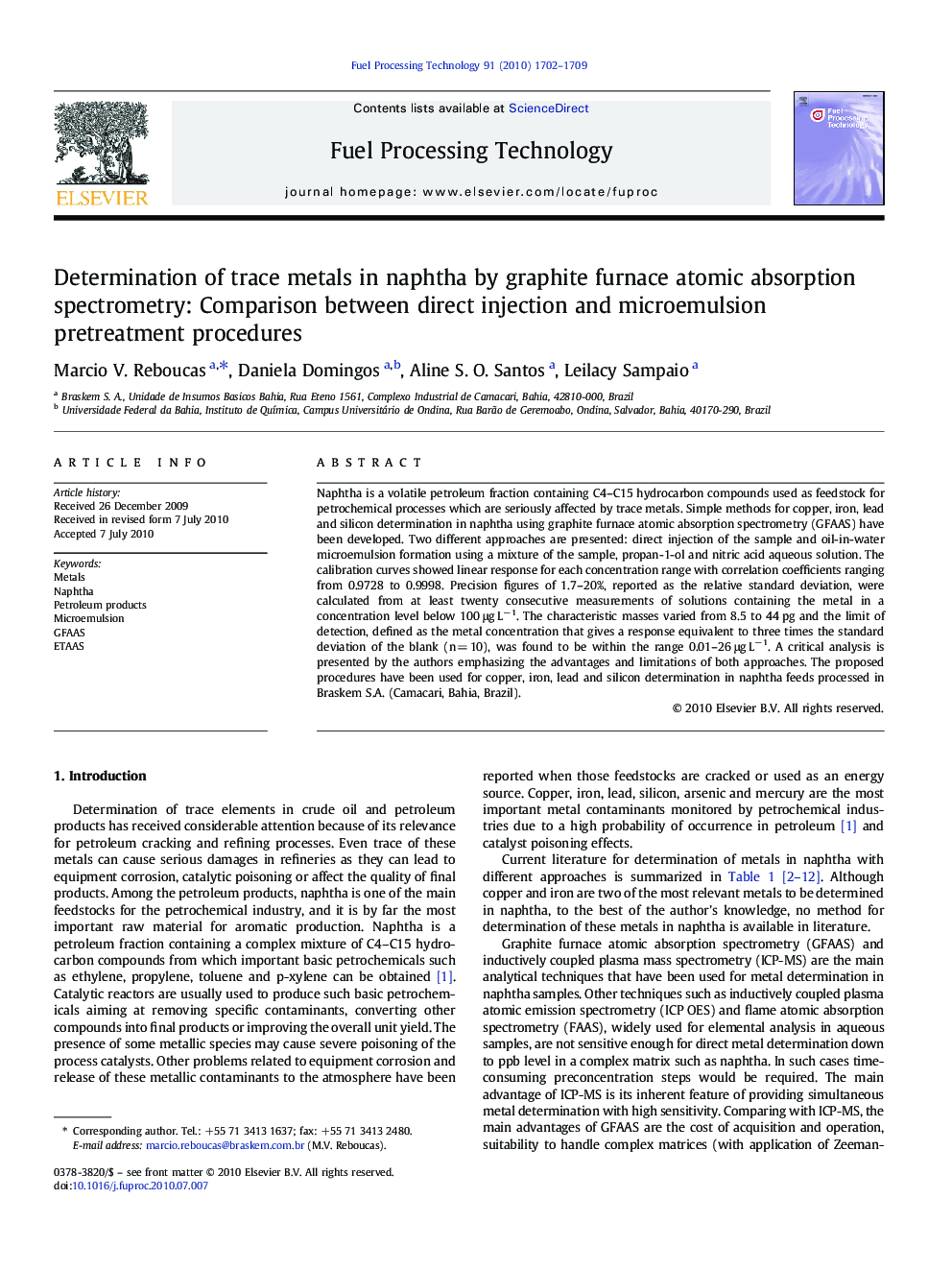| Article ID | Journal | Published Year | Pages | File Type |
|---|---|---|---|---|
| 210660 | Fuel Processing Technology | 2010 | 8 Pages |
Naphtha is a volatile petroleum fraction containing C4–C15 hydrocarbon compounds used as feedstock for petrochemical processes which are seriously affected by trace metals. Simple methods for copper, iron, lead and silicon determination in naphtha using graphite furnace atomic absorption spectrometry (GFAAS) have been developed. Two different approaches are presented: direct injection of the sample and oil-in-water microemulsion formation using a mixture of the sample, propan-1-ol and nitric acid aqueous solution. The calibration curves showed linear response for each concentration range with correlation coefficients ranging from 0.9728 to 0.9998. Precision figures of 1.7–20%, reported as the relative standard deviation, were calculated from at least twenty consecutive measurements of solutions containing the metal in a concentration level below 100 μg L−1. The characteristic masses varied from 8.5 to 44 pg and the limit of detection, defined as the metal concentration that gives a response equivalent to three times the standard deviation of the blank (n = 10), was found to be within the range 0.01–26 μg L−1. A critical analysis is presented by the authors emphasizing the advantages and limitations of both approaches. The proposed procedures have been used for copper, iron, lead and silicon determination in naphtha feeds processed in Braskem S.A. (Camacari, Bahia, Brazil).
